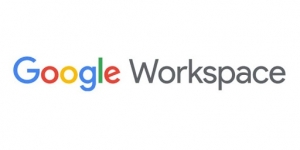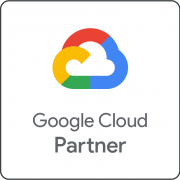Google Workspace Storage Policy Changes Impact Business Subscribers
Earlier today (April 15, 2021), Google announced changes to Google Workspace storage policies for Google Photos and the suite of collaboration apps. For Google Workspace subscribers on the Business Starter, Standard, and Enterprise licenses, these changes will impact how your data counts against your storage limits.
Policy Changes:
Effective June 1, 2021
- All new high-quality photos and videos uploaded to Google Photos will count towards your storage limit. Any photos or videos uploaded prior to June 1, 2021 will not count towards your storage limit.
Effective February 1, 2022
- Any new files created in Google Docs, Sheets, Slides, Drawings, Forms, or Jamboard will count towards your storage limit.
- Existing files that you modify after this date will also count towards your storage limit.
- Existing files that are not modified will not count towards your storage limit.
Impact
Depending on your use of Google Photos and the suite of collaboration apps, these changes to the storage policies means more of your files will count towards the storage limits in the Google Workspace Business tier licenses.
Business Starter
Storage limit: 30 GB per individual user
- Prior to June 1, 2021: If you have users that regularly use Google Photos, review their usage and determine if/when they might reach the limit.
- Prior to Feb 1, 2022: Review usage reports to assess how quickly individual users may reach the individual 30GB limit.
Action: Upgrade specific users to Business Standard or Business Plus, as needed to ensure they have the capacity they need.
Business Standard
Storage limit: 2TB per user, aggregated across the domain.
- Understand your storage limit. Storage is aggregated, calculate your limit by multiplying the number of Business Standard users by 2TB and the number of Business Plus users by 5TB. As an example, if you have 10 Business Standard users, your storage limit is 10 x 2TB = 20TB.
- Prior to June 1, 2021: Review your use of the Google Photos in the aggregate across your domain. Project the rate of growth over the coming year to assess if or when the use of Google Photos may cause you to hit your storage limit.
- Prior to February 1, 2022: Review your use of the collaboration apps (Docs, Sheets, Slides, etc.) to estimate your rate of growth and file modifications. With this estimate, you can project if/when you might approach your storage limit.
Actions: Running Business Standard licenses, you have options: (1) You can upgrade specific (higher activity) users to Business Plus, giving those users higher aggregated storage; (2) You can upgrade your entire domain to Business Plus, increasing your storage available to all users at the 5TB per user level; or (3) You can upgrade your service to a Google Workspace Enterprise license, giving your team unlimited storage.
Business Plus
Storage limit: 5TB per user, aggregated across the domain.
- Understand your storage limit. Storage is aggregated, calculate your limit by multiplying the number of Business Plus users by 5TB.
- Prior to June 1, 2021: Review your use of the Google Photos in the aggregate across your domain. Project the rate of growth over the coming year to assess if or when the use of Google Photos may cause you to hit your storage limit.
- Prior to February 1, 2022: Review your use of the collaboration apps (Docs, Sheets, Slides, etc.) to estimate your rate of growth and file modifications. With this estimate, you can project if/when you might approach your storage limit.
Actions: As you cannot mix Business and Enterprise tier licenses, you will need to upgrade your service (all users) to an Enterprise subscription. This change will provide unlimited storage.
Next Steps
Contact us if you would like help assessing your usage patterns, planning your utilization, or assessing your options. We will schedule a meeting with one of our Cloud Advisors or members of our Service Team.


 What Is Google Vault?
What Is Google Vault? With the restructuring of G Suite into
With the restructuring of G Suite into 
